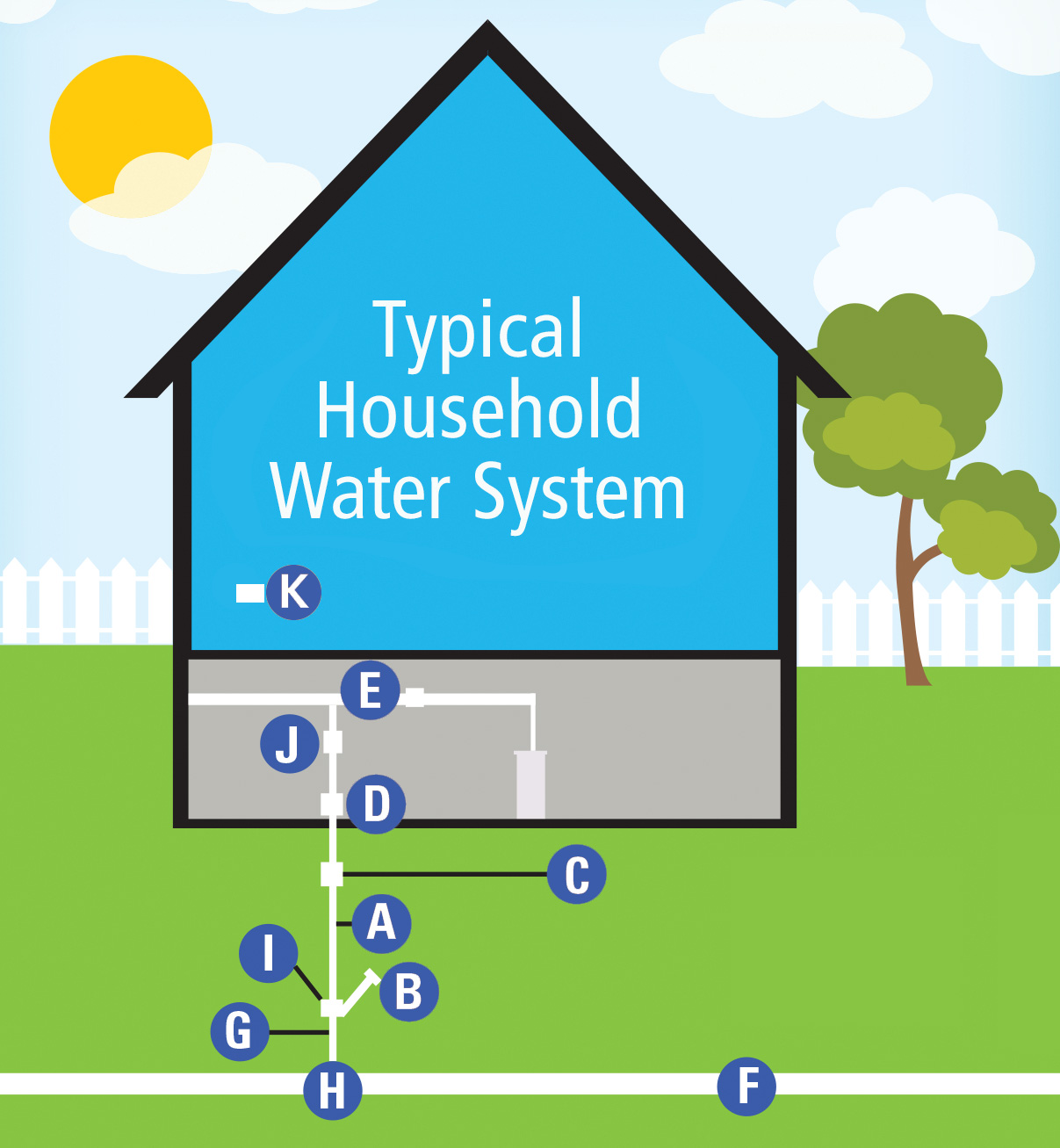Who Owns What
Ownership and responsibilities – ours and yours
Much of the equipment used to provide water is located beneath the ground, and it can be difficult to determine what is your responsibility versus Aquarion’s responsibility. Explore your state to see “who owns what”.
You own items A-E and are responsible for keeping them in good repair. Items F-K are owned by Aquarion, and we are responsible for their maintenance and repair.
If you have a problem with items A-E in the diagram (except for the water meter itself), please contact your plumber. If you need service on items F-K in the diagram, please call Aquarion’s Customer Service Center for 24-hour repair service.
You own items A, C, D and E, and are responsible for keeping them in good repair. The remaining items are owned by Aquarion and we are responsible for their maintenance and repair.
If you have a problem with items A, C, D or E in the diagram, please contact your plumber. If you need service on our equipment – items B, F-K in the diagram – please call our Customer Service Center.
You own items A, C, D and E, and are responsible for keeping them in good repair. The remaining items are owned by Aquarion and we are responsible for their maintenance and repair.
If you have a problem with items A, C, D or E in the diagram, please contact your plumber. If you need service on our equipment – items F-K in the diagram – please call our Customer Service Center.

Ownership Diagram
The diagram above shows a typical household water system.
A. Service line, the portion of pipe from the curb valve, located at or near your property line, into your home or business.
B. Curb box and the curb valve cover are usually at grade level, visible by a round plate about three inches in diameter that allows access to the curb valve.
C. Outside meter pit and cover, if your meter is located outside in an underground vault, the pit is a cylindrical ceramic casing. The metal cover is about the size of a dinner plate.
D. Main valve, also known as the cellar valve or house valve, located inside your premises at the service line’s point of entry (normally before the meter).
E. Pressure-reducing valve, an optional device which regulates the pressure of water entering the premises, is usually located on your plumbing near the water meter or hot water heater. It is the responsibility of the customer to verify the water pressure in the home to determine if the pressure is too high or too low to operate their internal plumbing systems. A licensed plumber can assist the homeowner in determining the proper solution to any pressure questions.
F. Water main, owned and maintained by Aquarion.
G. Service connection, the portion of pipe that runs from the water main to the curb valve.
H. Tap, the point at which the service connection pipe is connected to the water main.
I. Curb valve, located underground at your property line. The curb valve connects the service connection to your service line and operates as a shut-off valve.
J. Water meter, a device that measures your water usage.
K. Remote register, a device that allows us to read the meter in your basement without having to enter your home or business. It can be either an odometer-like dial or black box. If your meter has been recently changed, you will no longer need this piece of equipment as we can obtain your reading electronically.
Find and Fix Leaks
Even a small leak can easily add an additional 18,000 gallons to your quarterly water usage—and your bill. It can also damage your home and landscaping. If you water bill seems unusually high, a leak is the most likely culprit. Visit our Finding Leaks page for information on locating hidden leaks or call Aquarion’s Customer Service Center for more information.
